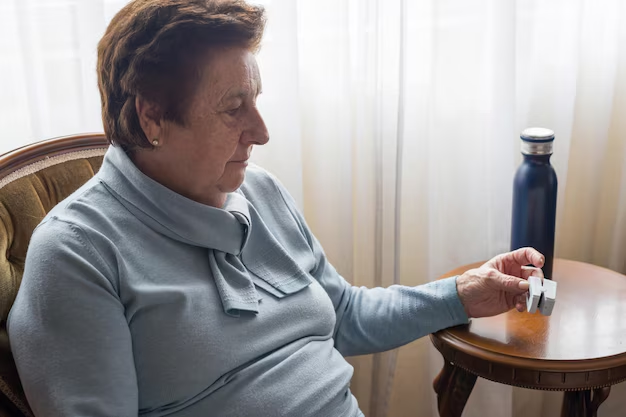Effectively Managing Parkinson's Disease: Your Guide to Comprehensive Treatment Options
Living with Parkinson's Disease can feel like a daunting journey. However, understanding the treatment landscape can empower you to navigate this path more confidently. Whether you're newly diagnosed or have been living with Parkinson's for years, this guide takes a deep dive into available treatment strategies, offering a nuanced look at managing symptoms and improving quality of life.
Navigating the Complexities of Parkinson’s Disease
Parkinson’s Disease is a progressive neurological disorder characterized by the death of dopamine-producing neurons in the brain. This leads to symptoms such as tremors, rigidity, and bradykinesia (slowed movement). It’s essential to understand that while there is currently no cure, there are multiple ways to treat and manage the disease effectively.
Medication: The Cornerstone of Symptom Management
Levodopa/Carbidopa
Levodopa combined with carbidopa is often the first line of treatment and is renowned for its efficacy in managing Parkinson's symptoms. Levodopa converts to dopamine in the brain, supplementing the reduced levels due to neuron degradation. Carbidopa is paired with it to prevent its early conversion to dopamine outside the brain, enhancing its effectiveness.
Key Takeaway: Levodopa/Carbidopa is highly effective but may lead to motor complications over time, necessitating adjustments by healthcare providers.
Dopamine Agonists
Dopamine agonists mimic dopamine’s effects in the brain and can be helpful for some people. They tend to be used in younger patients to delay the use of Levodopa or in combination with it to optimize results. Although beneficial, they can cause side effects like drowsiness or hallucinations in some individuals.
MAO-B Inhibitors
Monoamine oxidase-B inhibitors help to prevent the breakdown of brain dopamine, thereby enhancing Levodopa's effect. These medications are generally well tolerated and can be beneficial either alone in the early stages or alongside other treatments in later stages.
Lifestyle Modifications and Exercise: The Natural Adjuncts
Considering Parkinson's multifaceted nature, lifestyle changes can significantly impact overall well-being. Regular exercise, including activities like walking, swimming, or tai chi, has been shown to improve balance, flexibility, and possibly slow disease progression.
Diet and Nutrition
A balanced diet that supports brain health can also be advantageous. Foods rich in antioxidants, omega-3 fatty acids, and fiber can help maintain a healthy body, potentially alleviating some symptoms.
Practical Tip: Regular physical activity and a brain-healthy diet are complementary to medication, helping to manage symptoms and maintain mobility.
Surgical Interventions: When Advanced Therapies Become Necessary
For some patients, as Parkinson’s progresses and medication efficacy wanes, more invasive treatment options might be considered.
Deep Brain Stimulation (DBS)
DBS involves the surgical implantation of electrodes in specific brain areas, delivering electrical impulses that help regulate abnormal signals caused by the disease. Though not suitable for everyone, it has been approved for reducing symptoms like tremors and rigidity when medication is insufficient.
Important Consideration: DBS can significantly reduce symptoms but requires thorough evaluation and commitment from both patient and doctor.
Supportive Therapies: A Holistic Approach to Care
Enhancing quality of life for Parkinson’s patients often involves more than medication and surgery. Supportive therapies, such as physical, occupational, and speech therapy, play a critical role in comprehensive care.
Physical Therapy
Aimed at improving movement and balance, physical therapy can also incorporate flexibility and strength training tailored to the individual's needs.
Occupational Therapy
Occupational therapists focus on strategies to manage daily activities effectively, incorporating adaptive tools and techniques to enhance independence.
Speech Therapy
Speech therapists assist with communication issues, a common challenge as the disease progresses, enhancing clarity and confidence in social situations.
Holistic Insight: Integrating supportive therapies creates a well-rounded approach to managing Parkinson’s, addressing both physical symptoms and emotional well-being.
Mental Health: Addressing the Emotional and Psychological Aspects
Parkinson’s Disease not only affects the body but can also take a psychological toll, with many individuals experiencing depression or anxiety. Addressing these aspects is crucial for holistic management.
Psychological Counseling
Counseling can offer support and coping strategies, aiding patients and caregivers in dealing with the emotional challenges of the disease.
Psychiatric Medications
In some cases, antidepressants or anti-anxiety medications may be prescribed. These should be used under careful guidance to avoid potential interactions with Parkinson’s medications.
Embracing Community and Support Networks
Building a robust support system is vital. Engaging with support groups or community networks fosters a sense of belonging and provides a platform to share experiences and strategies with others facing similar challenges.
Remaining Informed and Proactive
Staying informed about the latest developments in Parkinson’s treatment is essential. Continuous research is shedding light on potential new therapies and interventions that might offer promise.
Engagement Tip: Participate in forums, attend seminars, or join advocacy groups to stay abreast of emerging trends and breakthroughs in Parkinson's research.
Final Thoughts on Managing Parkinson’s Disease
Managing Parkinson’s Disease is undeniably complex, requiring a multi-faceted approach tailored to the individual’s needs. By leveraging medication, lifestyle changes, surgical options, and supportive therapies, individuals can significantly improve their quality of life and maintain a greater sense of control over their journey.
Quick Reference Guide: Managing Parkinson’s Disease
- 🔑 Key Medications: Levodopa/Carbidopa, dopamine agonists, MAO-B inhibitors.
- 🏃♂️ Lifestyle and Exercise: Regular physical activity and balanced nutrition enhance overall well-being.
- 🛠️ Supportive Therapies: Physical, occupational, and speech therapies promote independence and symptom management.
- 🔍 Advanced Treatments: Surgical options like DBS for when conventional treatments are inadequate.
- 🧠 Mental Health: Address psychological aspects with counseling and medication.
- 👥 Community Support: Engage with support networks to share experiences and stay informed on advances.
Through informed choices and comprehensive care strategies, managing Parkinson’s Disease can become a more navigable journey.

Related Articles
- Are There Environmental Causes Of Parkinsons
- Can Alcohol Cause Parkinson's
- Can Concussions Cause Parkinson's
- Can Females Get Parkinson Disease
- Can Head Trauma Cause Parkinson's
- Can Parkinson Disease Cause Dizziness
- Can Parkinson's Affect Eyesight
- Can Parkinson's Affect Memory
- Can Parkinson's Affect Speech
- Can Parkinson's Affect Vision